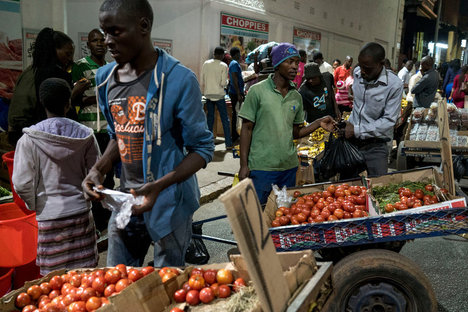(p. A3) Attorneys with the Wisconsin Institute for Law and Liberty are taking the state to court over a 1953 law that mandates all butter sold in Wisconsin be graded and labeled on factors such as flavor, texture and color by state-licensed tasters.
Those convicted of selling unlabeled butter in the state more than once could pay up to $5,000 in fines and spend a year in county jail.
The statute has enraged devotees of the popular Kerrygold brand of butter, which is produced in Ireland and hasn’t been tested by the state. Local retailers say their inability to sell the grass-fed, gold-packaged spread has affected their bottom line. WILL is representing four consumers in counties across Southeast Wisconsin in the suit, as well as a health-food store in Grafton.
“I think the issue is important because it’s a specific instance of a larger problem,” Rick Esenberg, WILL President and lead counsel, said of the obscure, 64-year-old ordinance. “The government should not restrict our liberties–particularly our ability to engage in a legitimate business and make a living.”
. . .
Wisconsin laws have shielded the dairy industry from out-of-state competition for decades, but have often crumbled under judicial scrutiny.
The Wisconsin Supreme Court in 1927 ruled unconstitutional a law prohibiting the sale of oleomargarine and other butter substitutes in the state, and in 1952 turned back an attempt to ban the sale of Dairy Queen soft-serve.
In 1895, Wisconsin forbade the sale of artificially colored margarine, forcing neighbors to pool funds and make “oleo runs” to the Illinois border to buy yellow-hued margarine in bulk. That law wasn’t repealed until 1967.
A half-century later, Wisconsin residents are now embarking on similar Midwestern voyages to stock up on Kerrygold.
“It has a richness to it and a taste to it that’s uncomparable to the other butters,” said Jean Smith, an avid consumer of Kerrygold and one of the plaintiffs in the Wisconsin suit.
Ms. Smith especially enjoys adding the Irish butter to her tea on mornings when she doesn’t have time for a full breakfast, and is a member of a Facebook group where neighbors keep each other abreast of the few Wisconsin stores supplying Kerrygold.
She buys the product whenever she travels out of state, picking up roughly a dozen bricks of butter on two trips to Nebraska this summer and then again when visiting Montana in May for her nephew’s graduation.
“The fact that I have to do that is absolutely ridiculous,” Ms. Smith said. “If it’s not related to safety, it’s not the government’s decision whether they should offer a product or not.”
For the full story, see:
Quint Forgey. “Wisconsin Lawsuit Aims to Whip Butter Statute.” The Wall Street Journal (Sat., Aug. 31, 2017): A3.
(Note: ellipsis added.)
(Note: the online version of the story has the date Aug. 30, 2017, and has the title “Wisconsin Lawsuit Aims to Cut Through Butter Laws.” Of the last eight short paragraphs quoted above, the first and third appear in both the online and the print version of the article. The rest only appear in the online version.)

